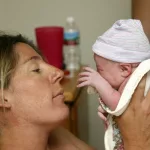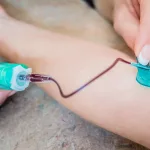You’ve just learned that cataracts are clouding your vision, and the surgeon’s quote feels like a mountain you can’t climb. You’re not alone—many people hit that wall of worry, wondering if they’ll ever see clearly again without draining their savings. Below is the quickest, most compassionate guide to cataract surgery assistance that actually works for you.
From nationwide charities to state‑run programs, we’ll walk through the options, eligibility rules, and step‑by‑step actions you can take today. Grab a cup of coffee, settle in, and let’s explore how you can get back the gift of sight without the financial nightmare.
Why Seek Assistance?
Cost Reality
In the United States, a standard cataract operation can cost anywhere from $3,500 to $7,000 per eye, depending on the surgeon, technology, and location. For many households, that number is higher than the entire monthly rent. According to a CDC report, over 30 % of adults over 65 have some form of cataract, yet a significant portion postpone surgery because of cost.
Health Impact
Untreated cataracts aren’t just a nuisance; they can lead to falls, reduced independence, and even depression. Imagine trying to read a recipe, recognize a familiar face, or drive at night—all blurred behind a foggy window. The sooner you restore clear vision, the faster you regain confidence and safety.
Balancing Benefits & Risks
Opting for low‑cost or charitable surgery doesn’t mean compromising quality—most reputable programs partner with board‑certified ophthalmologists and use the same premium intra‑ocular lenses (IOLs) you’d find in a private clinic. The key is to verify credentials, ask about post‑op care, and ensure the surgeon follows the same safety protocols you’d expect in any accredited facility.
Major Charitable Programs
| Program | What It Offers | Who Can Apply | How to Start |
|---|---|---|---|
| Mission Cataract USA | Free cataract surgery on “Mission Cataract Day”; nationwide network of volunteer surgeons. | U.S. residents with no insurance and no means to pay. | Call the nearest listed doctor or fill the online inquiry form. |
| Operation Sight (SC) | Free surgery for uninsured South Carolina patients; also handles urgent retinal cases. | Uninsured SC residents ≥ 18 y/o with cataract or sight‑threatening condition. | Submit the Participant Inquiry Form. |
| Center for Sight Foundation | Free sight‑saving surgery via annual “Mission Cataract” events. | U.S. citizens or resident aliens below federal poverty line, uninsured. | Download the 2025 Application Packet and mail/fax to Venice, FL. |
| Other Regional NGOs | Reduced‑cost or subsidized surgery; often paired with vision screening. | Varies—usually income‑based, may accept Medicaid/Medicare waivers. | Contact local eye clinics or city health department. |
Mission Cataract USA – How It Works
History & Credibility
Founded in 1991 by Dr. Frederick A. Richburg in Fresno, California, Mission Cataract USA now operates in all 50 states. The program is supported by the American Society of Cataract & Refractive Surgery (ASCRS) and follows the same clinical guidelines as any accredited eye center.
Application Steps
- Locate a participating doctor in your state (list available on the program’s website).
- Call the clinic to schedule a free screening.
- Bring proof of residence and a statement that you have no insurance coverage.
- On “Mission Cataract Day,” the surgeon performs the procedure at no cost to you.
Real‑World Story
Maria, a 58‑year‑old farmworker from Texas, walked into a Mission Cataract clinic with night‑time vision so poor she feared a fall. After a brief screening, she was scheduled for surgery the same month. “When I opened my eyes after the operation, it was like someone turned the lights on,” she says. Today she drives to work without glasses.
Operation Sight – South Carolina Focus
Eligibility Checklist
- Uninsured resident of South Carolina.
- Diagnosis of cataract affecting daily activities.
- Age 18 or older (pediatric cases handled separately).
Funding Source
The nonprofit is funded by private donors, local businesses, and charitable grants. All surgeries are performed by board‑certified ophthalmologists who volunteer their time.
How to Contact
Fill out the Participant Inquiry Form. After a short phone interview, a case manager will guide you through the screening and scheduling process.
Center for Sight Foundation – Mission Cataract Event
Income‑Threshold Criteria
Applicants must meet the U.S. Department of Health & Human Services poverty guidelines for 2025. Documentation includes recent tax returns, pay stubs, and a letter confirming lack of insurance.
Required Paperwork
- Government‑issued ID (driver’s license, passport).
- Proof of residence (utility bill, lease).
- Signed application packet (downloadable PDF).
Deadline & Timeline
The 2025 Mission Cataract event closes on May 23 2025. Once approved, patients are typically scheduled within 4–6 weeks.
Lesser‑Known Programs & How to Find Them
State Health Department “Vision Assistance” Lists
Many states publish searchable databases of low‑cost eye‑care providers. A quick Google search for “[your state] vision assistance program” can reveal hidden gems.
Hospital Charity Care Offices
Almost every major hospital has a patient‑financial‑services desk. Ask them about cataract surgery funding; they often have relationships with local charities.
Community Health Centers
Federally Qualified Health Centers (FQHCs) sometimes partner with NGOs to provide cataract screening and referral services at little or no cost.
Choosing the Right Option
Quick Self‑Assessment Checklist
- Do you have any form of health insurance? (Medicare, Medicaid, private?)
- Is your household income below the federal poverty line?
- Do you live in a state that hosts a Mission Cataract Day?
- How urgent is your cataract (e.g., affecting daily tasks, causing pain)?
Compare Cost vs. Value
Free programs eliminate the surgical fee but may require travel to a participating clinic. Low‑cost options might charge a modest co‑pay for supplies while offering local convenience. Weigh transportation, time off work, and post‑op follow‑up when deciding.
Red Flags & Scams
- Requests for upfront cash or credit‑card payments before any screening.
- Lack of a verifiable National Provider Identifier (NPI) number for the surgeon.
- No physical address or only a generic email address.
If anything feels off, trust your gut and verify with the state medical board or a local eye‑care professional.
Apply for Assistance
Step 1 – Gather Documentation
Collect a copy of your ID, proof of residence (utility bill or lease), recent tax return or pay stub, and any denial letters from insurers. Having everything ready speeds up the application.
Step 2 – Select a Program
Use the table above to pick the program that matches your location and eligibility. For example, if you live in South Carolina and are uninsured, Operation Sight is a good first stop.
Step 3 – Contact the Organization
Call the phone number listed, or send a concise email: “Hello, I am interested in free cataract surgery assistance. My name is [Your Name], I am a resident of [City, State], and I meet the income criteria. Please let me know the next steps.”
Step 4 – Complete the Application
Download the PDF, fill it out carefully, and either mail, fax, or upload as instructed. Double‑check that signatures are legible; a blurry signature can cause delays.
Step 5 – Prepare for Surgery Day
- Schedule any required pre‑op tests (blood work, eye measurements).
- Arrange transport to and from the clinic.
- Make a list of current medications to share with the surgeon.
Step 6 – Follow‑Up
After the operation, attend all post‑op appointments. Most charities provide a short supply of eye drops; if you need more, ask the clinic about low‑cost options.
Real‑World Experiences
Patient Story: “From Darkness to Daylight”
John, a 63‑year‑old retired electrician from Ohio, described his vision as “looking through a foggy windshield.” He qualified for Mission Cataract USA after his doctor confirmed he had no insurance. The surgery was performed on a Saturday, and John was back to driving his grandson to school within two weeks. “I felt like I got my life back,” he says, smiling.
Surgeon Perspective: Why We Volunteer
Dr. Richburg, founder of Mission Cataract USA, explains, “Seeing a patient’s first clear view is priceless. It’s not just about the surgery; it’s about restoring independence and dignity.” His team follows the same strict aseptic standards as any private practice, ensuring safety and outcomes are on par with for‑profit clinics.
Success Metrics
According to a study published by the American Academy of Ophthalmology, free cataract surgeries performed by certified surgeons achieve a 95 % success rate—comparable to standard fee‑for‑service procedures. Visual acuity improves an average of three lines on the Snellen chart, and patient satisfaction scores are consistently high.
Helpful Resources & Tools
PDF Checklist – “Cataract Surgery Assistance Kit”
Download a printable checklist that outlines every document you’ll need, phone numbers for major charities, and a timeline template to keep you organized.
Interactive Map of Participating Clinics
Search by zip code to find the nearest Mission Cataract or Operation Sight clinic. (Map embedded on the charity’s website.)
Phone Numbers for National Hotlines
- Vision USA Helpline: 1‑800‑555‑VISION
- Operation Sight (SC): 1‑844‑OP‑SIGHT
- Center for Sight Foundation: 1‑941‑925‑2020
Government Programs
Medicaid often covers cataract surgery for eligible adults. Check your state’s Medicaid portal, and if you’re unsure, call the local department of health. According to the U.S. Department of Health & Human Services, more than 20 % of eligible adults are unaware of their coverage.
Bottom Line Summary
- Cataract surgery can be affordable—or even free—if you know where to look.
- Major charities like Mission Cataract USA, Operation Sight, and the Center for Sight Foundation provide proven, high‑quality care.
- Start by checking your insurance status, income level, and state residency.
- Follow the simple six‑step application process to get on the path toward clear vision.
Remember, you don’t have to navigate this alone. Reach out, ask questions, and let the community of compassionate professionals guide you. Your eyes deserve the best care, and help is out there—sometimes just a phone call away.
What’s your next move? Share your thoughts in the comments, or if you’ve already benefitted from one of these programs, tell us your story. We’re all in this together, and together we can bring light back into each other’s lives.


















Leave a Reply
You must be logged in to post a comment.